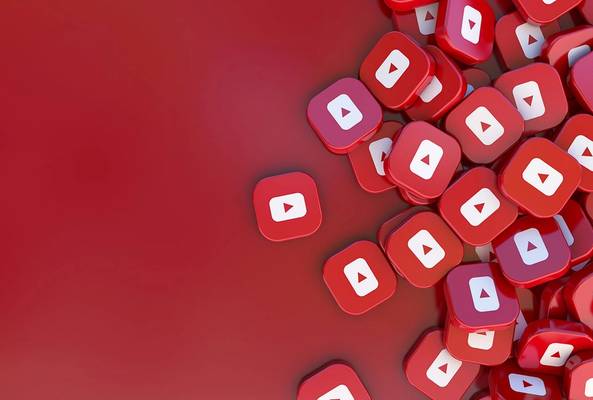Bryan is an Ops leader with over 8 years of experience in SaaS and online video platforms, combining deep analytical expertise with a passion for products that empower users. When not diving into data, he's writing poetry, walking his twin Maltese dogs, and finding new ways to turn numbers into narratives.
Do Emojis in YouTube Titles Help or Hurt Your Views? (Data from 128M Videos)
If you’ve ever wondered if you should use emojis in your YouTube titles, you’re asking a good question. Thousands of creators experiment with emojis to grab attention, but the question remains: do emojis in YouTube titles actually help or hurt your video performance?
We decided to analyze 128.5 million YouTube videos to find out. The data reveals a clear, and surprising, pattern: emojis can boost your visibility in YouTube Shorts but may limit reach for long-form videos.
In this guide, we’ll break down the numbers, explain why emojis work differently across content types, which emojis work best, and share YouTube video title optimization tips you can apply right now to increase your views.
What Our YouTube Title Optimization Data Revealed
To get a definitive answer, we studied 128.5 million videos uploaded to YouTube in September 2025. We wanted to see exactly how emojis affected performance across formats.
- 98.9 million YouTube Shorts
- 32.2M with emojis
- 66.7M without
- 29.8 million long-form videos
- 5.4M with emojis
- 24.4M without
We measured everything: views, engagement rates, like rates, comment rates, and performance at different percentiles to understand the full picture of how emojis impact video performance.
The results shocked us, and may completely change how you approach YouTube title optimization in 2025.
YouTube Shorts: Emojis Increase Views by 49%
Here’s the headline: if you’re making YouTube Shorts, emojis are a major growth driver.
YouTube Shorts Performance With Emojis
Metric Average Views Median Views 75th Percentile Views 90th Percentile Views Like Rate Comment Rate | With Emojis 38,993 1,469 7,260 30,804 3.12% 0.184% | Without Emojis 26,125 1,300 4,498 25,205 2.67% 0.148% | Difference +49% ✅ +13% ✅ +61% ✅ +22% ✅ +17% ✅ +24% ✅ |
|---|
Key takeaway: Shorts with emojis get nearly 50% more views and perform better across every single metric we measured.
Interestingly, 32.5% of all Shorts creators already use emojis, they’ve discovered what the data confirms. That’s nearly double the adoption rate among long-form creators.
These findings give us one of the clearest YouTube Shorts title optimization tips you’ll ever hear: use emojis to stand out visually and emotionally in a crowded feed.
Long-Form Videos: The Engagement vs Views Trade-off
For traditional long-form YouTube videos, the story flips. Emojis don’t deliver more views, but they do deliver higher engagement
Long-Form Video Performance With Emojis
Metric Average Views Median Views 75th Percentile Views 90th Percentile Views Like Rate Comment Rate | With Emojis 8,191 814 3,056 12,217 5.23% 1.09% | Without Emojis 9,237 763 3,078 13,291 4.30% 0.78% | Difference -11% ❌ +7% ✅ -1% ~ -8% ❌ +22% ✅ +40% ✅ |
|---|
Key takeaway: Long-form videos with emojis get fewer views overall but significantly higher engagement, especially comments.
That trade-off matters. The content with emojis attract stronger reactions from your core audience but might turn away casual viewers or those discovering you through search.
Think of it this way: your existing subscribers might love emojis and find them fun (more engagement!), but potential new viewers searching for content might perceive emoji-filled titles as less professional or credible, especially for educational content.
Why Emojis Work So Much Better in YouTube Shorts
Here’s four main reasons why emojis outperform so dramatically in the Shorts feed:
1. The Shorts Feed Is Visual-First
Shorts viewers scroll rapidly. Emojis provide instant visual contrast, making your title pop against a sea of text. It's quick emotional signaling in a fast-scrolling environment.
2. Shorter Titles = Bigger Impact
Most Shorts titles are 4–7 words long. One emoji takes up a big portion of that space, adding eye-catching personality.
3. Emoji-Native Audiences
Shorts skew younger. Gen Z and Gen Alpha communicate visually, and emojis are part of their language.
4. Algorithm Weighting
The Shorts algorithm heavily values engagement. Since emojis correlate with +24% more comments, they feed the recommendation loop and increase YouTube views organically.
These factors explain why YouTube Shorts tips often emphasize visual hooks: thumbnails, quick intros, and now — emojis.
Most Popular YouTube Emojis (and When to Use Them)
Not all emojis perform equally. Here’s what creators use most often and why they work.
Best Emojis for YouTube Shorts
Emoji 🔥 😂 😍 ✨ 💀 🤯 💯 | Usage Energy, trending content Comedy, funny moments Aesthetic or admiration Lifestyle, transformation Gen Z humor Shocking content Facts, credibility | Why It Works Universal hype signal Quick humor cue Builds emotion fast Polished “vibe” symbol Irony and inside jokes Curiosity driver “This is real” shorthand |
|---|
Best Emojis for Long-Form Videos
Emoji 🔴 🔥 😱 😍 😂 💰 | Usage Live streams Trending, excitement Reaction content Emotional topics Light-hearted videos Finance, giveaways | Why It Works Required visibility cue Universal energy Attention grabber Audience connection Relatable humor Monetary relevance |
|---|
Should You Use Emojis? (Decision Framework)
Here’s a simple framework to decide whether emojis belong in your next title.
✅ For YouTube Shorts Creators: Emojis are often better
The numbers speak for themselves, Shorts with emojis get 49% more views on average.
Best practices:
- Use 1–2 emojis that match your content vibe.
- Place one at the start of your title for instant visual impact.
- Keep it natural, don’t force it.
- Match the emoji to your content tone.
- Comedy: 😂
- Aesthetic/Lifestyle: ✨
- Trending/Viral: 🔥
- Emotional: 😍
⚙️ For Long-Form Video Creators: Use Strategically
Use emojis when you want to spark engagement, not when chasing search-based discovery.
Use emojis if:
- You’re building community or interaction.
- You’re hosting a live stream (🔴 is basically required for visibility).
- Your content is emotional, casual, or personal.
- Targeting existing subscribers over new viewers
Avoid emojis if:
- You’re targeting professional audiences.
- You’re creating SEO-focused evergreen content.
- You’re going for viral reach or authority positioning.
This is where YouTube title optimization becomes nuanced, it’s not just about CTR; it’s about intent alignment.
How Many Emojis Should You Use in YouTube Titles?
More isn’t always better.
The sweet spot: 1–2 emojis maximum.
Using too many can look spammy or low-effort.
Placement tips:
- At the beginning: Strongest for scroll-stopping impact.
- At the end: Adds context or emotional flavor.
- Next to a keyword: Emphasizes key phrases.
And always remember, relevance beats aesthetics. A mismatched emoji can tank credibility.
Before & After Examples: YouTube Title Optimization
Here’s how subtle emoji adjustments can transform performance.
YouTube Shorts Examples
Comedy Content
- ❌ Before: “Making pasta from scratch”
- ✅ After: “Making pasta from scratch ✨🍝 Expected: +49% views, +24% comments
Viral/Trending
- ❌ Before: “This hack changed my life”
- ✅ After: “This hack changed my life 🤯💡” Expected: higher feed visibility and CTR
Long-Form Examples
Live Streams
- ❌ Before: “Building My Startup LIVE”
- ✅ After: “🔴 Building My Startup LIVE” Expected: ideal for live visibility
Professional or Educational
- ✅ Keep: “Complete Guide to YouTube SEO in 2025”
- ❌ Don’t: “Complete Guide to YouTube SEO in 2025 📊🚀” Reason: reduces authority and trust.
These are practical YouTube video title optimization tips any creator can apply.
Want to test different versions of your titles before publishing? Try the vidIQ AI Title Generator to instantly craft optimized titles that balance curiosity, keywords, and click-worthiness.
The Final Verdict: Emojis in YouTube Titles (2025 Edition)
After analyzing 128 million videos, the verdict is clear:
For YouTube Shorts: Typically Use Emojis
You may get 49% more views and stronger engagement. Emojis make your Shorts pop in the feed and connect emotionally with viewers.
For Long-Form Videos: Use Strategically
Emojis boost engagement but can slightly lower reach. Use them to nurture your existing audience or emphasize tone,not as clickbait.
And if you’re live streaming?You want to use 🔴. It’s the single best way to grab attention and indicate that the content is live.
These insights show that YouTube title optimization isn’t one-size-fits-all. The best creators test, measure, and adapt based on content type.
Key Takeaways (TL;DR)
- YouTube Shorts get +49% more views with emojis, use them for most Shorts.
- Long-form videos trade 11% fewer views for 40% higher engagement.
- Limit to 1–2 emojis per title to avoid clutter.
- Match emoji tone to content type and audience.
- Use 🔴 for live streams.
- Test consistently, every channel’s audience reacts differently.
FAQs
Can you put emojis in YouTube titles?
Yes. YouTube supports emojis in both Shorts and long-form titles. They display correctly across all devices and can help your videos stand out, especially in mobile feeds.
Do emojis in YouTube titles increase views?
In our analysis of 128M videos, YouTube Shorts with emojis got 49% more views on average. Long-form videos saw higher engagement but slightly fewer views.
How many emojis should you use in a YouTube title?
Use 1–2 emojis maximum. More than that looks cluttered and can reduce credibility. Place emojis at the start or end of your title for best visual impact.
Are emojis good for YouTube Shorts titles?
Yes, they work extremely well. Emojis add emotion and grab attention in the fast-scrolling Shorts feed. They’re one of the easiest YouTube Shorts title optimization tips to apply.
Do emojis affect YouTube title optimization or SEO?
Indirectly. Emojis don’t change rankings, but they can improve click-through rate (CTR), which helps YouTube title optimization by signaling viewer interest to the algorithm.






